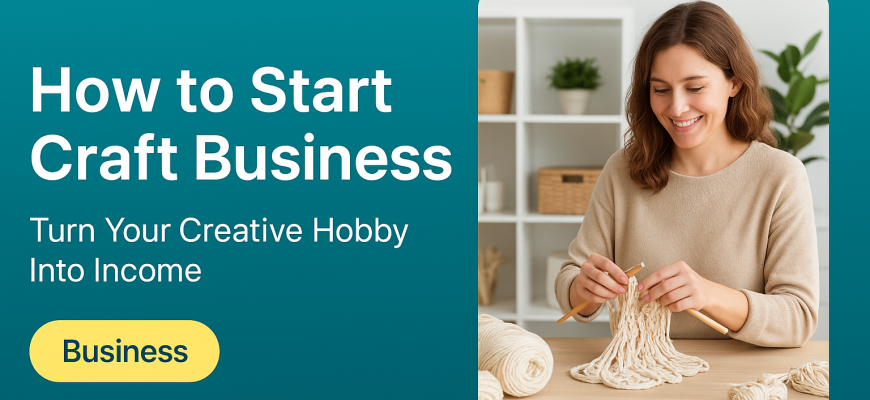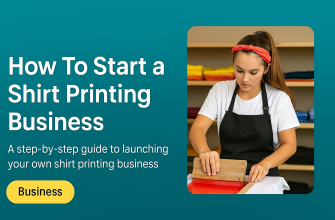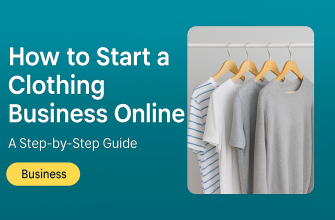Starting a craft business is more than just turning a hobby into extra income – it’s about sharing your creative spark with the world and building something you own. As a business coach who’s helped many women turn their passion into profit, I understand both the excitement and the nerves that come with taking the leap. Let me assure you: yes, you can do this! Whether you’re completely new to entrepreneurship or have dabbled in selling your handmade goods before, this guide will walk you through the journey step by step. By the end, you’ll have practical tips for building your craft brand (online or in-person) and the confidence to make it happen. Remember, every successful maker started exactly where you are now – with a dream and a willingness to learn.
Women are launching businesses like never before. In the U.S. alone, women entrepreneurs started 1.7 million new businesses between 2019 and 2023, contributing nearly $580 billion in revenue to the economy. We are claiming our space in every industry – crafts included. And guess what? Handmade goods are in high demand. The global market for crafts and handmade products is estimated at over $900 billion and growing fast, which means there’s plenty of room for your creative venture to find its niche. So if you’re looking for a fulfilling way to make a living doing what you love, you’re in the right place. Let’s turn that crafty idea of yours into a thriving reality!
- Identifying a Niche: Choosing What to Make and Sell
- Choosing a Memorable Name
- Creating a Cohesive Brand Identity
- Legal and Logistics: Laying the Proper Groundwork
- Where to Sell: Pros and Cons of Online Platforms vs. In-Person Markets
- Marketing 101: Getting the Word Out through Social Media, Email, and Storytelling
- Trust the Journey of Your Craft Business
Identifying a Niche: Choosing What to Make and Sell
One of the first steps in your craft business journey is deciding what exactly you’re going to sell – and who you’re selling it to. Many creative entrepreneurs have a lot of ideas (that’s part of what makes you creative!), but success often starts with finding a focused niche for your business. This means zeroing in on the sweet spot between what you love to create and what customers want to buy.
Follow your passion, but check the market: Begin by listing the types of crafts or products you love making. Is it hand-poured soy candles? Colorful crochet baby toys? Upcycled jewelry made from vintage finds? You might already have a signature craft in mind. Next, do a little research on each idea – are people out there looking for this kind of item? For example, if you adore knitting scarves, check sites like Etsy to see how many others are selling similar scarves and what styles seem popular. Don’t worry if the market looks crowded; that just means there’s demand. The key is to pinpoint what makes your version special.
Ask yourself a few questions to define your niche and craft “brand story”:
-
Who do you imagine using or wearing your products? Young moms decorating a nursery? Pet owners looking for cute accessories for their pets? Busy professionals wanting a touch of handmade decor in their office? Defining your ideal customer helps tailor your products to their tastes.
-
What makes your craft unique? Do you use a special material (like all-natural, locally-sourced ingredients or recycled fabrics)? Do you have a distinctive style (maybe you hand-paint whimsical designs on every item, or your pottery has a recognizable color glaze)? Perhaps your cultural background or life story influences your designs, giving them a personal flair. Write down a few things that set your creations apart.
-
Why are you passionate about this craft? Your “why” is powerful. Maybe woodworking relaxes you and you love creating beautiful toys that last for generations, or perhaps you started making organic skincare because you wanted safer products for your own family. When you tap into the deeper reason you create, you’ll find the core message that can resonate with customers. (For instance, “I make eco-friendly soy candles because I care about creating cozy homes without harmful chemicals” – a story like that attracts customers who share your values.)
Once you answer these questions, you’ll have a clearer picture of your niche. For example, instead of “I make jewelry,” you might define your niche as “I make boho-chic beaded jewelry inspired by nature, for free-spirited women who want unique everyday accessories.” Or instead of “I sew things,” you could say “I create colorful handmade baby quilts personalized with names, perfect for new moms who want a one-of-a-kind keepsake.” See how specific and vivid that sounds?
Choosing a niche doesn’t mean you can never expand later – it just gives you a focused starting point. It helps you develop products that go together, attract a specific audience, and build a brand identity more easily. It also guides your research: if you know you want to sell, say, pet accessories, you can dive deeper into that world (What are pet owners looking for? What price points? What styles?).
Tip: Look for the intersection of passion and profit. If you’re passionate about your product, you’ll have the motivation to stick with it. If there’s market demand, you’ll have customers to sustain it. Find that intersection and you’ve struck gold (or at least, a viable business idea!).
Lastly, don’t be afraid that niching down will limit you too much. In reality, it helps you stand out. Customers will start to think of you as “the candle lady who uses beautiful real flower petals in every candle” or “the artist who makes those funny greeting cards for nurses”. That’s a good thing! It’s easier to become memorable when you have a clear specialty. You can always broaden your offerings later or add new product lines once you’ve built a strong foundation. But in the beginning, focus is your friend.
Choosing a Memorable Name
Your business name is often the first impression you make. Here are some pointers for picking a great name:
-
Reflect your craft or vibe: Ideally, the name gives a hint of what you make or the feeling you want to evoke. It could be literal (“Cozy Knit Creations” for a knitting business) or imaginative (“Sunflower & Sage Studio” for a warm, earthy vibe). Think about words that resonate with your products and audience. Make a list of keywords (materials, themes, feelings, even your own name or nickname) and play around with combinations.
-
Keep it simple and clear: Aim for a name that’s easy to pronounce and spell. You want happy customers to be able to tell their friends, “I bought it from [Your Business]” without confusion. Avoid overly long or complicated names. Short and sweet can be powerful (e.g., “Joyful Stitches”, “Clay & Co.”).
-
Check availability: Once you have a favorite or two, do a quick online search. Is someone else already using that name in the craft space? If it’s too similar to another brand, you might want to tweak yours to avoid confusion (and legal issues). Also check if the domain name (for a website) or social media handles are available for your chosen name. It’s handy if you can snag your business name on platforms like Instagram or Etsy. If your exact name is taken, consider slight variations (adding “Studio” or “Designs” or your own name, etc.).
-
Think long-term: Try to pick a name you can stick with. If you think you might expand your product range later, avoid a name that’s too narrow. For example, “Lily’s Resin Jewelry” is specific – which is fine if you’re sure you’ll only do jewelry – but if you might do other crafts, something like “Lily’s Artful Creations” gives you room to grow.
There’s no perfect name, so don’t overthink forever. The goal is a name that feels right to you and fits your brand personality. Once you choose it, embrace it and go all-in!
Creating a Cohesive Brand Identity
Beyond the name, your brand identity is how you “package” your business visually and emotionally:
-
Visual style – logos, colors, and more: Consider creating a simple logo for your business. It could be your business name in a nice font or a small icon that represents your craft (for instance, a tiny yarn ball graphic for a knitting brand). There are free or affordable tools like Canva that let you design logos even if you’re not a pro designer. Choose 2-3 colors that you’ll use consistently in your logo, website/shop banner, and even product packaging. This color palette might come naturally from your products (a beach-inspired craft business might use ocean blue and sandy beige, for example). Consistency is key – if your Etsy shop, business cards, and Instagram posts all use the same colors and similar style imagery, people will start to recognize your look.
-
Brand voice and vibe: Think about the tone you use when writing product descriptions, social media posts, or talking to customers. Is it friendly and casual? Professional and expert? Quirky and fun? Ideally, it sounds like you, but dialed into what your customers connect with. A cohesive brand voice helps create familiarity. For instance, if your brand is all about cozy comfort, you might use a warm, welcoming tone and lots of imagery of snuggling under blankets with your handmade quilt.
-
Tell your story: Storytelling is a powerful part of branding. Share a bit about why you started this business or what inspires your crafts. You can put a short version of your story in your “About” section on Etsy or your website, and sprinkle pieces of it in your social media captions. When people know the human and the passion behind the products, they feel more connected to your brand. Don’t be afraid to let your personality shine through – you might be a one-woman shop, but that personal touch is an advantage you have over big-box stores!
-
Cohesive product line and photos: For a craft business, your products themselves are part of your brand identity. Strive for a cohesive look in what you offer. That could mean a consistent style (all minimalist and modern, or all colorful and whimsical) or a consistent theme (for example, everything is made from recycled materials, or everything has a certain motif). When you take product photos, keep the background and style uniform so your shop looks put-together. Great photos are huge in attracting customers online – good lighting and clear images make your crafts look their best. You don’t need a fancy camera; a smartphone by a window and some simple props can do wonders. Keep your branding in mind here too: if your brand vibe is earthy and calm, maybe you photograph on a wood table with a sprig of greenery; if it’s funky and fun, maybe use a bright solid backdrop and playful props.
Remember, branding is about impression. A cohesive brand helps customers instantly get what you’re about and makes you memorable. However, don’t get paralyzed trying to make it “perfect” from the start. Brands evolve. It’s okay to start simple – even just a catchy name and basic logo – and refine your visuals as you go. The most important thing is to be authentic. Build a brand that feels true to you and speaks to your ideal customer, and you’ll naturally attract the people who love what you do.
Legal and Logistics: Laying the Proper Groundwork
Alright, let’s switch gears to the less glamorous (but super important) side of starting a business: the legal and logistical setup. Getting your paperwork and systems in order may not be as fun as designing new products, but it will save you headaches down the road and set you up as a real business from day one. Here are the key pieces to consider:
-
Choose a business structure: Decide how you’ll legally organize your craft business. Many solo crafters start as a sole proprietorship – basically, you are the business, operating under your own name or a DBA (“Doing Business As” your chosen business name). This is the simplest route and usually doesn’t require a lot of formal paperwork to start. The downside is that there’s no legal separation between you and the business, so you’re personally liable for business debts or issues. As your business grows, you might consider forming an LLC (Limited Liability Company). An LLC creates a legal separation between your personal assets and the business, offering you some protection if something goes wrong. Forming an LLC involves registering with your state (in the U.S.) and paying a fee, but it’s usually not too complicated and can often be done online through the state’s business filing website. Every country/state has its own rules, so check your local government’s small business resources to see what’s required. You don’t necessarily need to start as an LLC from day one, but it’s good to know it’s an option as you expand. If you have a co-founder (perhaps you’re starting this business with a friend), you could also form a partnership, but make sure to have a clear partnership agreement. For most one-woman craft startups, sole prop or single-member LLC are the common choices.
-
Register your business name: If you’re using a business name that isn’t just your own name, you may need to register it. This is often called filing a DBA (Doing Business As) or a “fictitious name” registration. It lets your local government know “The Crafty Cottage” is owned by Jane Doe, for example. It also allows you to open bank accounts and sign contracts under your business name. While doing that, consider applying for a Tax ID for your business. In the U.S., this is an EIN (Employer Identification Number) from the IRS – it’s free and you can get it online. Even if you have no employees, an EIN is useful to have: you can use it instead of your SSN for business paperwork, and it’s typically required to open a business bank account. Other countries have similar small business ID numbers – check your local tax authority’s guidance for small businesses.
-
Licenses and permits: Check what licenses or permits you might need to legally sell your crafts. Often this depends on your city/county and the nature of your business. Commonly, a general business license or tax registration from your city or county is needed (sometimes it’s just a simple fee and form to declare you’re running a home-based business). If you plan to sell at craft fairs or markets, some regions require a seller’s permit or temporary event permit. For instance, in many U.S. states you need a sales tax permit to collect sales tax from customers if you sell in-state. It sounds complicated, but usually it’s just registering online so you can report and remit sales tax you collect. If you’re in doubt, a quick call to your local Small Business Development Center or municipal office can clarify what’s needed for a small retail/craft business. Don’t let the red tape scare you – thousands of Etsy sellers and market vendors navigate this, and you can too!
-
Separate your finances: One of the best decisions you can make early on is to open a business bank account (even if you’re a sole proprietor). Keeping your business money separate from your personal money will make bookkeeping and tax time so much easier. It also makes you feel more legit – your Etsy payments or craft fair earnings go into your “Craft Biz” account, and you pay expenses out of that account. Most banks offer free or low-fee business checking accounts for small businesses. Along with this, start tracking your income and expenses from the start. It can be as simple as a spreadsheet or using an app/accounting software. Record costs of materials, fees (like Etsy fees), shipping supplies, etc., and of course record all your sales. Not only will this keep you financially organized, it also helps you understand if you’re truly profitable (and where you might need to adjust your pricing, which we’ll cover in a second).
-
Pricing for profit: Speaking of profitability, let’s talk pricing. Many first-time entrepreneurs struggle with how to price their handmade goods. It’s tempting to undercharge, especially if you’re not confident yet or you see cheaper mass-produced items out there. But remember, you’re not Walmart – you’re offering something unique, made with care, and your pricing should reflect the value and the labor that goes into your work. A simple formula many crafters use is: Cost of Supplies + Labor + Overhead + Profit Margin. For example, if a knitted scarf costs $5 in yarn and packaging, takes 2 hours of your time (and you decide your time is worth, say, $15/hour), that’s $5 + $30 labor = $35. Add a bit for overhead (maybe $3 to cover things like your portion of electricity, marketing, Etsy fees) = $38, and then add profit margin – which could be doubling the cost, aiming for a 50% profit margin, etc. You might end up at a price around $70-$80. This is just an illustration, but notice: don’t forget to pay yourself in that calculation! Your time and skill are valuable. Also research what similar handmade items sell for in your niche; it will give you a ballpark. If everyone is charging $50 for a similar scarf, can you justify a higher price because your materials or designs are superior? Or do you need to streamline your process to lower your labor time? Pricing is part art, part science. The key is to ensure you’re not losing money (account for those fees and shipping costs!) and that you’re making it worth your while. It’s okay to start a bit lower to get sales rolling, but plan to raise to sustainable prices once you build some momentum. Tip: Don’t compete solely on price – compete on quality, story, and uniqueness. Customers who love handmade are usually willing to pay for the right piece.
-
Taxes and record-keeping: Once you start making sales, you’ll need to handle taxes on that income. Set aside a percentage of each sale for taxes so you aren’t caught off guard at year-end (in the U.S., roughly 20-30% of profit to cover federal/self-employment taxes, though it varies). If you have that separate bank account, you can periodically transfer “tax money” to a savings account. Keep receipts of your business expenses, because many are tax-deductible (materials, shipping fees, website fees, a portion of your home utilities if you have a home office, etc. – ask an accountant or use IRS small biz resources to learn what you can deduct). It might be worth consulting an accountant or using tax software when tax time comes, to be sure you’re filing correctly as a business. It’s not the most fun part of crafting, but it’s part of being a savvy entrepreneur.
-
Insurance and protection: When you’re just starting from your kitchen table or garage studio, you might not need business insurance immediately. But do consider it as you grow, especially if you do a lot of in-person events or invest in inventory/equipment. A simple liability insurance policy for small businesses can protect you if, say, someone gets hurt at your craft fair booth or a product somehow causes injury (this is rare, but for example if you make skincare or candles, someone could have an allergy or an accident – insurance is there for peace of mind). Also, if you hold inventory at home, check if your homeowner’s/renter’s insurance covers business property; often it doesn’t, so you might get a rider or small business policy to cover theft or damage (imagine a leak ruining all your handmade journals – insurance can help recoup losses). When you eventually have a dedicated studio or store, insurance is a must. But again, one step at a time – just keep it on your radar.
Whew, that’s a lot of ground covered – and you might be thinking, “Um, do I have to do all this right away?” Take it at a reasonable pace. Perhaps you start by opening that bank account and getting any required license, and meanwhile work on pricing. Then you gradually tackle the rest. The goal isn’t to overwhelm you with admin, but to empower you. When your business foundation is solid, you can focus more energy on the fun parts (creating and selling) without worrying that something will come back to bite you. Consider creating a simple checklist of these tasks and checking them off one by one. You’ll feel super accomplished seeing those boxes ticked, and you’ll be officially setting yourself up as the CEO of your very own craft company.
Where to Sell: Pros and Cons of Online Platforms vs. In-Person Markets
With your products ready and your business groundwork laid, the next big question is where (and how) to sell your crafts. In today’s world, you have more options than ever: you can open an online shop with a global reach, sell face-to-face in your local community, or a mix of both. Let’s explore the main avenues and the pros and cons of each:
-
Online Platforms (Etsy, Shopify, etc.): Selling online is a fantastic way to start if you want to keep things flexible and low-cost. Platforms like Etsy provide a ready-made marketplace with millions of buyers searching for handmade products. Etsy is very beginner-friendly – you can set up a shop in an afternoon and start listing items with minimal upfront cost (there’s just a small listing fee and they take a percentage of sales). The huge advantage of online marketplaces is built-in traffic; shoppers can stumble across your products while browsing, even if they’ve never heard of you before. Other options include Amazon Handmade (Amazon’s marketplace for artisan goods) or setting up your own website via Shopify, Wix, or Squarespace. If you go the Shopify/own website route, you’ll have more control over your branding and no marketplace rules to follow – it’s your website, after all. Plus, no one else’s products will appear next to yours (unlike Etsy, where customers might get distracted by competitors). However, with your own site, you are responsible for driving traffic through marketing and SEO, since people won’t find you unless you actively promote it. In summary, online selling pros are: low overhead (no rent), worldwide customer base, open 24/7, and easy scalability. Cons: high competition (especially on Etsy – you’ll need good photos and maybe some SEO savvy to stand out), platform fees, and the need to handle shipping logistics. But many craft entrepreneurs start online because it’s low risk – you can test which products sell and gather feedback without a huge investment. (Quick tip: If you sell online, invest time in clear photos, detailed descriptions, and good customer service – reviews and ratings matter for attracting more buyers!)
-
In-Person Markets and Fairs: There’s nothing quite like selling your crafts face-to-face. Setting up a booth at a local craft fair, farmer’s market, or holiday bazaar allows customers to touch, feel, and fall in love with your products in person. The experience can be incredibly rewarding: you get to see smiles, chat about your process, and build personal connections. The pros of in-person selling: you often make more sales per day due to impulse buys (people came to shop, and they can take the item home immediately – no waiting for shipping), you can get immediate feedback (“I love this color!” or “Do you have this in blue?” which can inform your product development), and you can sometimes charge a bit premium for the experience and personal touch. Plus, you might meet fellow vendors and create a supportive local network. However, there are cons: preparing for a market is a lot of work. You’ll need enough inventory ready, attractive displays, and perhaps a canopy, tables, or props for your booth. There’s usually a booth fee to participate. You might spend long hours on your feet during the event (and not every event is successful – sometimes foot traffic is slow or weather doesn’t cooperate if it’s outdoors). Also, in-person usually limits you to the local customer base (unless tourists are shopping). And don’t forget, you’ll need to handle point-of-sale stuff like a way to take payments (today it’s easy with smartphone + card reader apps like Square). Tip: Start with small, well-regarded local events to get your feet wet. It’s okay to start with just a modest table setup; you can grow your display over time as you learn what works. Bring an email sign-up sheet or business cards – even if someone doesn’t buy that day, they might later!
Why not both? Many successful craft businesses do a combination of online and offline selling. For example, you might keep an Etsy shop year-round (capturing orders from anywhere, anytime) and also do a few big craft fairs during peak seasons (like a summer art fair and a Christmas market) to boost sales and visibility. Having an online presence is useful even for local-focused businesses – people will Google you or want to follow you on social media after meeting you at a market. Even a simple one-page website or active Instagram account can serve as a digital business card for your in-person customers. Conversely, if you primarily sell online, consider occasional pop-ups or markets in your area when possible; they’re great for meeting customers in real life and getting your name out there. The two channels can actually feed each other: someone discovers you on Etsy and sees you’re doing a local show (so they come meet you), or someone buys at a craft fair and later orders again from your website.
Choosing what’s right for you: If you’re not sure where to start, think about your product and your personal strengths. Are your crafts easy to ship and photograph well? Online might be a no-brainer. Is your community bustling with fairs and your items really shine when people see them up close? In-person might be awesome. You can start with one and add the other later. Many women begin online for the low cost, then branch out once they feel ready to meet the public (or vice versa). There’s no one-size-fits-all – do what fits your life and business goals. The wonderful thing is, you have the freedom to craft a selling strategy that suits you.
Marketing 101: Getting the Word Out through Social Media, Email, and Storytelling
“Build it and they will come,” said no successful business owner ever. In reality, once your shop is set up (online or offline), you’ll need to spread the word and attract customers. Marketing might sound intimidating, but think of it this way: it’s simply how you share your products and story with people who will love them. We’ll cover a few foundational marketing strategies for craft businesses: social media, email lists, good old word-of-mouth, and the art of storytelling.
-
Social Media Magic: Social media can be a powerful tool for growing a craft business, especially for visual creators, without becoming overwhelming. Focus on 1 or 2 platforms where your audience is most active – Instagram, Pinterest, TikTok, or Facebook – and tailor your content accordingly. Share high-quality images of your work and the creative process to highlight the effort behind each piece, even if it’s just your hands working or a simple voiceover. Engage authentically by responding to comments and connecting with others in your niche to build a loyal community. Use a few relevant hashtags or keywords to improve your reach without spamming. Above all, be consistent – posting a few times a week with honest, behind-the-scenes content will go further than trying to be perfect.
-
Build an Email List: While social media is useful, building an email list gives you direct access to your audience – without relying on changing algorithms or third-party platforms. Even with just a few subscribers, you can start collecting emails through simple sign-up forms online or in person, offering something of value like a discount or helpful tips in exchange. Emails land right in people’s inboxes, making them one of the most effective ways to drive sales and build relationships. Keep your tone personal and informative, sharing updates, product launches, or behind-the-scenes content about your creative process. Regular but non-spammy emails – maybe once a month – can turn casual fans into loyal customers. Think of your list as your VIP circle and one of the most reliable tools you own to grow your craft business.
- Spread by Word-of-Mouth and Local Buzz: Word-of-mouth remains one of the most powerful marketing tools for a craft business, driven by genuine customer satisfaction, community connections, and personal recommendations. By delivering exceptional service – whether through thoughtful packaging, handwritten notes, or responsive support – you create memorable experiences that people naturally want to share. Encouraging happy customers to leave reviews or tag you on social media helps build trust and visibility, while engaging your local network by telling friends, joining community events, or reaching out to local media can create valuable buzz. Even small gestures can spark meaningful referrals and loyal support.
- Tell Your Story – The Heart of Your Marketing: Your personal story is one of your strongest marketing tools, offering authenticity that big brands can’t replicate. Customers are drawn not just to what you make, but to why and how you make it – so share that journey openly. Whether it’s through your website, social media captions, or behind-the-scenes glimpses, let people see the human side of your business, from your inspirations and values to your daily process. Talk about your beginnings, challenges, and what motivates you, and don’t be afraid to highlight what sets you apart, like eco-conscious practices or cultural influences. Even if the response is slow at first, consistency and sincerity build connection and trust over time, turning followers into loyal customers.
Trust the Journey of Your Craft Business
Finally, keep in mind why you started this journey. You have a creative gift and a vision for your life that involves sharing that gift and gaining freedom or fulfillment from your business. Whenever things get tough or chaotic, reconnect with that why. It will give you the energy to push through challenges and keep going.
Launching and growing a craft business is a journey with ups and downs. There will be days of excitement (like when you create a product you’re obsessed with or get amazing feedback from a customer) and days of frustration (like when sales are slow or you mess up a batch of product). Through it all, remember that every step forward – even the small ones – is progress. You’re building something of your own, and that’s incredibly brave and special.
You’ve got this. With the right mindset, a clear plan, and a whole lot of heart, you can turn your creative dream into a thriving reality. So set those goals, pace yourself, and don’t forget to enjoy the ride. Each chapter of your entrepreneurial story, from the first sale to the 500th, is worth cherishing. Here’s to your craft business success – I can’t wait to see you shine and thrive!









